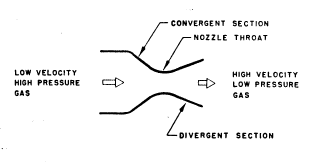Bos's5.0 wrote:
Very interesting stuff. Are you willing to put up a picture of your header venturi?
Does any of this correspond to a turbocharged header design?
I do not put a venturi or anything in header or at port. Whatever Erland did for his morotsycle port was helping to increase velocity in the exhaust. It is very common for me to use a tube diameter off the cylinder head that is smaller in area than the port's area. (How much I can reduce the area is my info.)This in effect creates a venturi out of the whole first step of the header. The reason I believe this makes more power is because the port is or was too large and the loss in velocity during the exhaust event of each cylinder is given up. I can regain some of that velocity, and often many times more power across the entire power band. The flow bench only tells us how much air that can be made to go through a opening at a given pressure drop. It does not tell you how much you need at what velocity! While it is not incorrect to sell head porting by comparing flow numbers, just as in larger carbs and larger headers, larger heads do not mean it will be tuned properly. It is time for people to really understand bigger is not always better! You have heard it before and it is true!
Turbocharged systems are also maligned by the same type of thinking. I have been in professional engine and race circles for many years and I could count on one hand the number of outfits that have done back to back tests on things like tube diameters, volumes etc. of just turbo manifolds. Audi, Mercedes Benz and Mitsubishi come to mind right off the bat, and guess what, they are not gonna tell you what they found out! Everybody else gets one chance to build a manifold and so they will err on the side of big. This is how it works. So the news is that bigger is better when they really do not know that, they just know what they have is good. So, I believe most stuff I have seen, including turbo mustangs, are bigger than they probably need to be and are giving up velocity and in a turbo app that would translate into more lag and less boost.
For your turbo app? every rule of flow counts, no sharp edges, minimize tight radius, keep sudden area changes to a minimum, (merged collectors), get the pulses going around in a circle as they enter the collector, not cris-cross, no sudden angle changes like shorting a radius because you needed a smaller radius but did not have one. etc. Drag racing turbo's is an art and those who do the most testing will know the most and are not going to telll you what they really know. Could they benefit by trying to increase velocity in the header? Maybe they could make boost a little easier, will it make them go down the track faster? I do not know, but from what I have seen they probably have better places to spend their money than to worry about port and manifold size, eh?






